Control Towers, perhaps the most important concept to come out of Supply Chain Management practices in some time, is a concept in desperate need of definition and description.
Aberdeen recently ran a survey of Business Intelligence (BI) looking for answers, and came away with some great insight and good direction. But BI does not provide the technology capabilities that were identified by Aberdeen as necessary to support a Control Tower. I’ll explain later. In the Aberdeen report, Supply Chain Control Towers: Concept and Impact, Bryan Ball defines the supply chain issues driving the need and interest in Operations Control Towers really well though, and in the process describes some of the key characteristics:
What if we could remove all of the information delay in supply chains and operate in real time when it comes to problem solving? … Responses to “what-if” questions could be determined in minutes rather than hours and days. … the “Holy Grail” of supply chain leaders has always been to remove as much latency as possible in every aspect of the supply chain … latency results in inventory buffers … The term “Control Tower” is … an end-to-end holistic view of the supply chain and near real-time information and decision making.
That is my bolding and underlining in the last sentence. This is because Bryan has identified an absolutely key differentiator between a simple alerting system and a Control Tower. The visibility provided by the end-to-end holistic view of the supply chain is a necessary precursor to a Control Tower, but, without the ability to determine how to act (decision making) on the information provided, you do not have a Control Tower. While nice in concept, the question is if removing latency has been the “Holy Grail” for some time, why is there now an interest in Control Towers? The answer lies in the business needs.
So it is the virtual storm between increasing customer expectations and increasing supply chain complexity that is driving the need for Control Towers. Perhaps more importantly is the process capability improvements that early adopters have achieved with the rudimentary capabilities provided by BI tools.
It is important to note that in the context of using BI tools to support the concept of a Control Tower, Bryan states that:
… we define the improvement in latency as a key to measuring the effectiveness of a Control Tower and we equate this to the “time to problem resolution”. This approach goes far beyond measuring the “time to alert” that is often touted by business intelligence (BI) providers and simple event management systems.
While undoubtedly a good way of looking at things, the terms “time to alert” and “time to problem resolution” need to be explored some more. Each term starts with “time to …” indicating the importance of speed and echoing the early statement that
Responses to “what-if” questions could be determined in minutes rather than hours and days.
Time to Alert – Know Sooner
Key questions that need to be asked about an alert are :
- To whom?
- About what?
Let’s start with what simple event management and BI tools can provide in terms of alerting, which is ample, but not sufficient. They can, for example, in the case of a simple event management system, send an alert to a purchasing agent if a delivery from a supplier is late by, say, a day. BI tools can be used to determine that over the course of, say, the last month the supplier on-time delivery performance has dropped below 95%. All good stuff, but are these isolated pieces of information important? Does it matter to the rest of the supply chain that the delivery is late? If there is a significant impact, who should know? In my example, will the late delivery cause a production line to go down next week because of part shortages? If it will, shouldn’t we alert the plant manager? What if the plant manager isn’t an employee but rather works for a Contract Manufacturer? It is impossible to determine the future impact of an event without:
- A multi-tier representation of the supply chain that crosses functions and organizations
- A multi-tier BOM that links the late materials to end item customer demand
- Routings, manufacturing capacities, and transportation leg lead times
- Sourcing and allocation rules
- Costings for each of the supply chain steps from material supply to end item delivery
Simple localized event detection or historical performance analysis will not tell you the impact, if any. This is truly complex event processing. As Bryan describes, one of the primary purposes of an Operations Control Tower is to reduce latency, and yet supply chain complexity is only growing because of globalization and outsourcing. So now you have put multi-tier BOMs and other capabilities into place so that you can determine the end-to-end impact of an event, but who should know? Unless you can determine this very quickly (reduce latency), the downstream/upstream impact information is of little use. This is where the concept of Responsibilities come into play. Knowing who needs to know about an effect, not the event itself, is critically important. Armed with both the ability to determine the downstream and upstream effects or impacts and whether they exceed acceptable control tolerance very quickly, and the ability to determine who needs to know very quickly. BI tools and simple event management systems can’t do this.
Time to Problem Resolution – Act Faster Undoubtedly knowing something sooner is important. Knowing quickly that this something will have significant upstream or downstream effects is even better, and quickly telling someone that needs to know is significant. So now what do you do? If it takes you forever to determine how to either take advantage of the opportunity of reduce the risks associated with the event you might as well have not known sooner. Remember that a key concept behind a Control Tower is that it is at least multi-functional, and, in many cases, multi-enterprise. So how are you going to resolve the issue at hand when it crosses multiple functions and multiple enterprises with competing objectives and metrics? The Aberdeen survey highlighted complexity as one of the biggest challenges in supply chain driven by global operations and outsourcing. How do you know who needs to know about a situation and who can help you resolve the issue? In a presentation at the Gartner Supply Chain Conference a number of years ago, Angel Mendez, at the time the head of Cisco’s Customer Value Chain Management organization, commented that Cisco had something like 20,000 people in their supply chain, only 2,000 of whom worked for Cisco. (The exact numbers may be wrong, but you get the picture.) So how do you find the right person to speak to in this type of end-to-end supply chain. Every minute it takes to find the right person to alert and the right person to help greatly reduces the physical supply chain’s ability to respond profitably and quickly to the alert. This is where the concept of Responsibilities comes to play, which is the ability to identify the people who need to know about the event, and also, and more importantly, the upstream and downstream effects of the event, and the people impacted by these effects. For example, if a late supply deliver is going to mean a 2 week delay in delivering an important customer order, it is best to tell the customer before the agreed delivery date. And to correct this situation may require the reallocation of existing raw materials or even finished goods. Alternatively, this situation could be resolved by expediting materials from an alternate supplier, but this needs to be evaluated against the impact on revenue, margin, and customer service of doing so. Spending time finding the right people who can act increases the time to problem resolution. But another dimension to this puzzle that shouldn’t be lost is the time it take to come to an agreed course of action that is aligned with multiple, and often competing, performance metrics. This is where What-If Analysis and side-by-side comparison of Scorecards on Dashboards becomes so important. Once you have assembled the team of people that are required to resolve an issue, they must be able to propose changes and evaluate the impacts quickly across multiple metrics. For example, expediting materials from an alternate supplier may wreak havoc on the metrics of the Material Supply department, but may be the best alternative in that it has the least impact on revenue and customer service, and only a moderate impact on margin. If it takes 8 hours to evaluate the upstream and downstream impacts of the proposed changes, let alone getting consensus and approval for the changes, the default behavior of the organization will be seat-of-the-pants firefighting, leading to all sorts of unintended consequences. The team selected to resolve the issue must have a collaborative environment in which they can propose changes, capture their assumptions, evaluate the alternatives, and vote on the outcomes. All supported by a full audit trail to eliminate the ‘I didn’t know’ excuse. And the results of the what-if analysis must be computed in minutes, even seconds, not hours. This is how you can act faster, and with confidence. Outcomes Without tangible results this discussion about the need for Control Towers would be theoretically interesting at best. Which is why I was so interested in the tangible results published by Aberdeen.
As anyone who reads my blogs with any regularity knows, Cash-To-Cash is one of my favorite supply chain metrics. To put it into perspective, a 7 day difference in Cash-to-Cash to a $10B company means a reduction in capital requirements of $191M. And this is for fairly simple Control Tower capabilities provided by BI solutions that do not extend much beyond simple alerting systems. When decision making capabilities are included in Control Tower capabilities the benefits are even higher. So where are you on this journey to ‘an end-to-end holistic view of the supply chain and near real-time information and decision making’? Studies out there indicate that most companies are still at an early stage of maturity focusing on functional excellence with some early stage adoption of cross-functional capabilities exemplified by S&OP. So don’t be intimidated by the achievements of the visionaries. It is a journey, but every journey must have a destination, and there is no doubt in my mind that Bryan Ball describes the ultimate Control Tower destination very well.




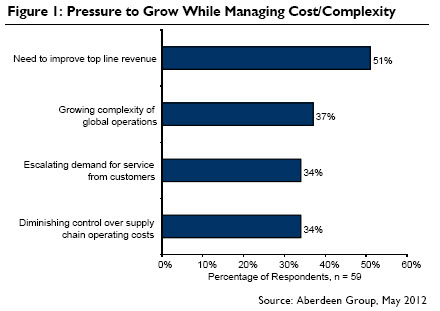
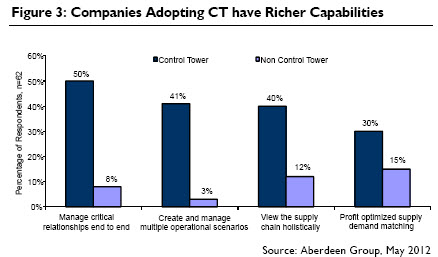
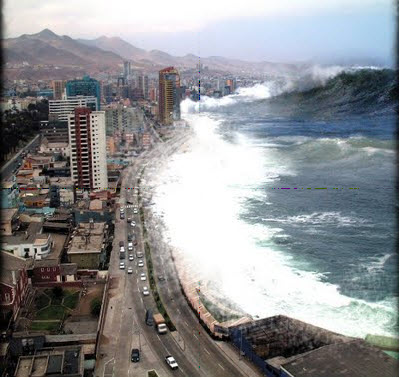
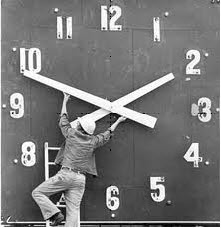
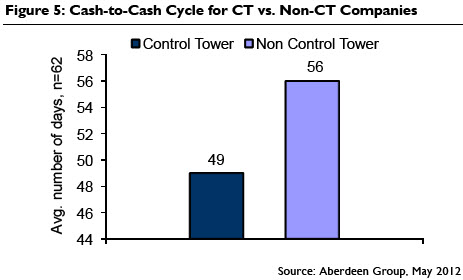
Discussions
Technology is only ever a enabler to Processes, which in the end have to be adopted by People. If the people aren't willing the Process will not be adopted, making the Technology worthless.
But in this sort of discussion I use the anoly og crossing the Grand Canyon. If your purpose is exercise you may well choose to walk, but you have best be fit and be willing to sweat, as well as have good boots. People, Process, Technology.
If you purpose is to cross it in only only once in one direction you may choose to adopt Evil Knievel tactics, but you had best have a death wish and a powerful motor bike, not to mention the ramps. People, Process, and Technology.
If you want to cross the canyon repeatedly and quickly you might want to use a helicopter meaning you have to have a pilot, landing pads, and refueling stations. People, Process, Technology.
In fact you have to start with purpose/strategy first.
So undoubtedly there are barriers to adoption of Control Towers, and supply chains are complex. Exposing the complexity through visibility does not make them more complex. Reducing the information and decision latency helps you manage that complexity.
Regards
Trevor
The question I have is how does mature to deploy a control tower ? What is the starting point and steps in the maturity process ? Should the control be manned by the same personnel permanently or rotated from the operations staff on a regular basis ?
What I am seeing happen is that a new planning organizational structure is being formed in which,as you state, people with functional competencies are being co-located. But not everyone in the functional organizations is being col-located, or even brough in under the new origanization. It is more that the job definitions are requiring more cross-functional cooperation and, dare I use the word, collaboration.
The question is to whom do these people report. At early stages of maturity they tend to retain reporting lines into functional organizations, meaning they will tend to prioritize the needs of the function over the needs of the horizontal process or end-to-end business value.
More mature organizations bring people intot he same organization, whether co-located or not, while retaining their functional competencies. An example of this is a biopharma company that has a Supply Chain function that has medium term responsibilities for ensuring that the end-to-end supply chain is meeting organizational financial goals while satisfying customer demand and having sufficient manufacturing and supplier capacity to meet customer demand. Thye have separate organizations that, for example, ensure that the factories are operating efficiently, or that the most cost effective transportation routes are being used, and even in-country demand planning people.
As to your question about the personnel being permanent or rotated, I think I answered that above. In a more mature organization working in the Control Tower is likely to be a career progression from a functional role.
Hope this helps.
Regards
Trevor
Being able to make the right decisions require an end-to-end view of the entire supply chain and all it's moving parts. You need to know how a decision in this section is going to ripple out and impact another section and what kind of effect that will have further on down the supply chain.
Yes, I agree. The "end-to-end view of the entire supply chain" is the central concept of a Control Tower. So far people have been satisfied with visibility. It is the ability to make decisions that adds a great deal of value over and above the visibility.
Regards
Trevor
It’s supposed to give you an end-to-end view of all supply chain operations, which should — in theory —reduce delays in information flow, and by extension, the corrective actions you need to take to reduce or eliminate disruptions.
Leave a Reply